If you are planning your first skydive, you are sure to have a lot of questions. You may well be curious as to how the day will pan out, how long does it all takes, and when skydiving, just how long are you in the air?
Not all skydives are the same. How the day will go and how long it takes can depend on the weather and time of year. It will also depend on your experience, the type of skydive, and the height you jump from.
While there are no set plans and routines, we can give you an idea of what to expect. Let’s take a look at the typical times when jumping from different heights. Let’s also talk about how long you can expect to be in freefall and get an idea of how a typical day skydiving day will go.
How long does it take to skydive from 30,000 feet?
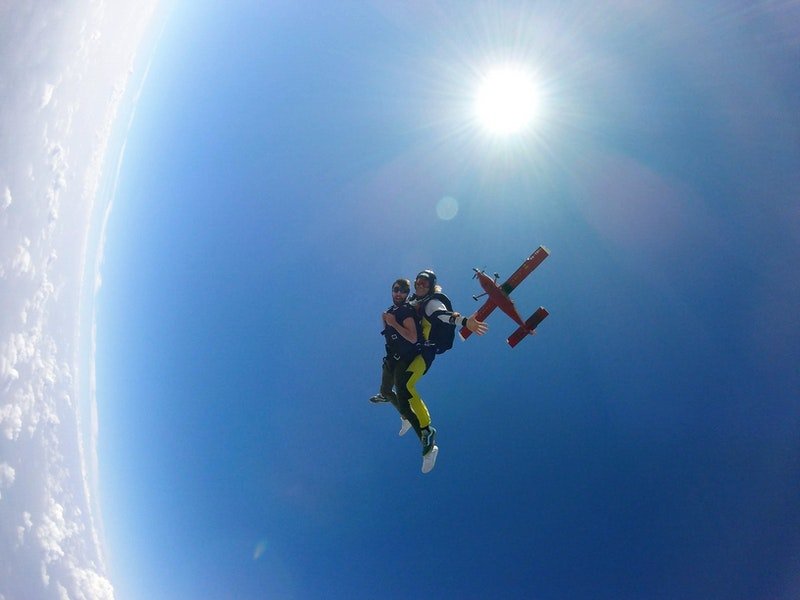
30,000 feet, or 9.14 Kilometers, or 5.7 miles. This is not a height many skydivers will ever get to jump from. Skydiving from this height is often called HALO (High Altitude Low Opening), HAHO (High Altitude High Opening), or MFF (Military Freefall) skydiving. These jumps are usually taught to elite military and require specialist equipment.
At this height, you can experience temperatures around -40° C to -57° C (-40° F to -70° F). It can also be tough (or impossible) to breathe. As well as wearing extra warm clothing to protect you from the extreme cold, you’ll also need oxygen. Some organizations recommend using oxygen when skydiving from any height over 15,000 feet. Jumping without sufficient oxygen equipment at 30,000 feet is likely to cause hypoxia. This condition happens to the body when it is starved of oxygen, leading to extreme altitude sickness and even death.
How long you are in the air when skydiving from 30,000 feet depends on when you deploy your parachute and your positioning. In a standard belly-to-earth freefall position, a skydiver will fall at approx 200 feet per second once at terminal velocity. The first 1,000 feet will take around 10 seconds as you gain speed. After that, it should take around 5 seconds for every 1,000 feet you fall. Once you deploy your parachute, you’ll slow down and it’ll take close to a minute to descend 1,000 feet.
How long does it take to skydive from 15,000 feet?
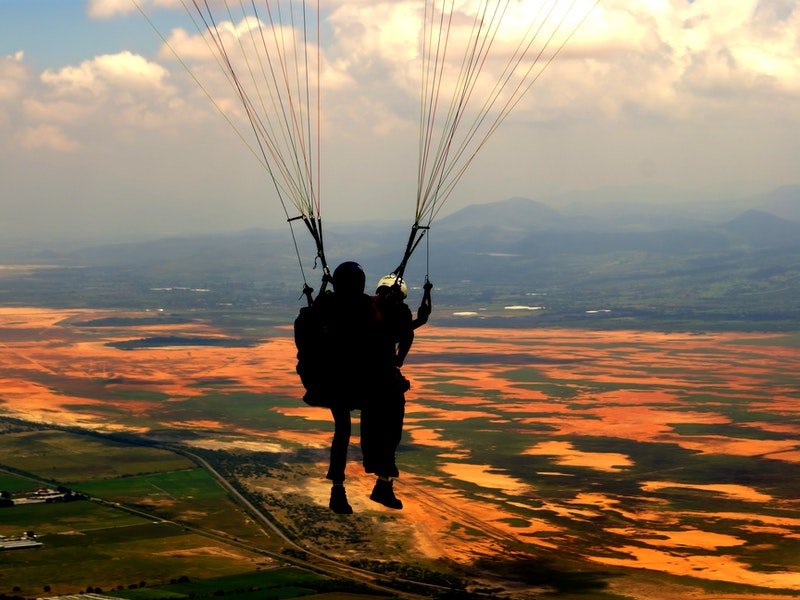
A jump from 15,000 feet is a far more common skydive. Most skydives are around 10,000 to 15,000 feet, so this is at the upper end of where someone new to skydiving is likely to jump. Again, it totally depends on the type of jump and positioning you use, but in the standard belly-to-earth position, you’ll be in freefall for around one minute.
As a novice skydiver, you’ll deploy your parachute at 6,000-5,500 feet, and the parachute will be fully open before you hit 5,000 feet. That will be followed by a slow parachute descent of around 3-6 minutes. The time really depends on how the parachute is maneuvered, how large the parachute is, and how aggressively it is flown. From 6,000 feet descending calmly, it should be around 5 minutes.
These times are based around a novice skydiver on a standard skydive. The amount of time it takes to skydive from 15,000 feet can change dramatically when taking a more aggressive approach. In the belly-to-earth position, you will hit your terminal velocity at close to 120 MPH. However, taking the head down position allows skydivers to reach speeds of 150-180 MPH. There is also a discipline known as speed skydiving. In this version of skydiving, perfect streamlining has seen competitors speed through the air at 300 MPH.
How long does it take to skydive from 10,000 feet?
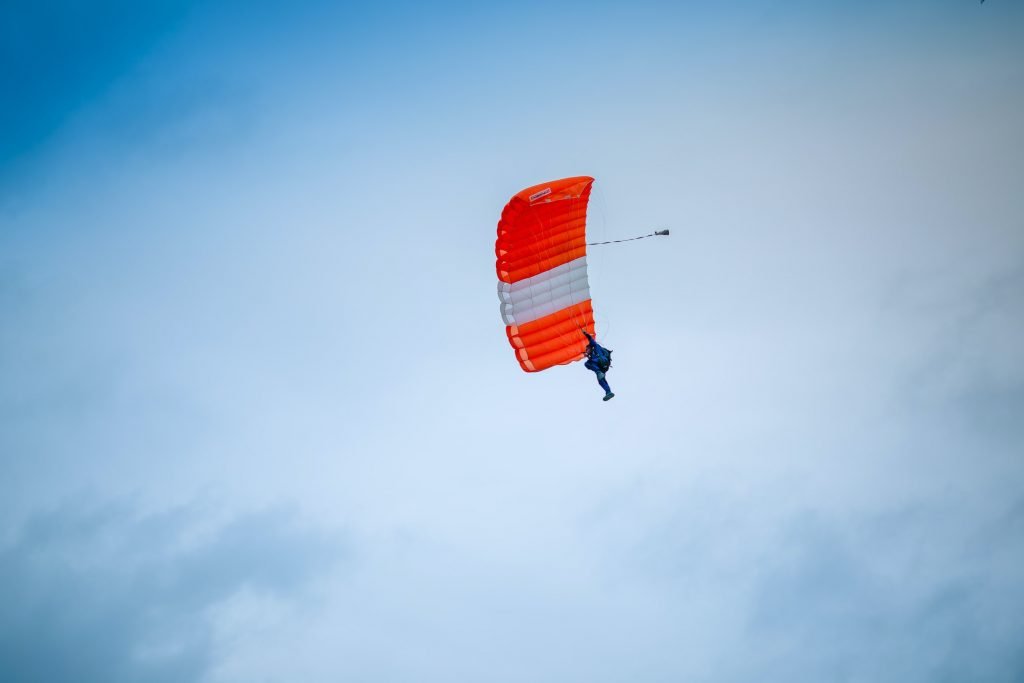
10,000 feet is towards the low end of a first-time skydive. skydiving at this height, you will get around 30 seconds of freefall air. This will be followed by a parachute descent of 2-6 minutes: you still need to deploy by 5,000 feet.
10,000 feet is often a less popular height to skydive from due to the lack of freefall time. Most skydivers will want to jump from around 13,000 to 14,000 feet. At this height, you are maximizing your freefall without getting close to the 15,000 limit and need for oxygen equipment.
The reason for different altitude jumps changes from place to place, company to company. The reason can be down to weather and local atmosphere but is often due to the aircraft available. One of the most popular skydiving planes is a Cessna 182. Its popularity is down to its simple and reliable features, with the ability to put in multiple runs a day on limited fuel. However, the downside is that it nears its maximum drop zone height at 10,000 feet.
How long is skydiving free fall?
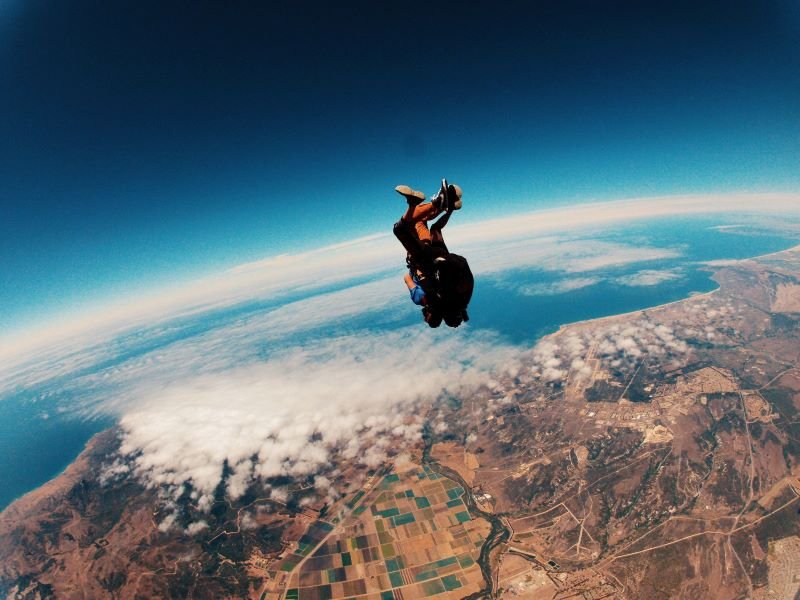
What people often mean when they ask ‘how long are you in the air for’ is, how long is a skydiving freefall. Above, we’ve given you the freefall times and parachute descent times you can expect to experience as a newbie. Once you’ve achieved your A license and are a certified skydiver, you can deploy your parachute at 3,000 feet. This means you’ll start to experience a lot more of that awesome freefall.
Here’s an idea of the freefall times you’ll get when taking the belly-to-ground position, deploying your parachute at 3,000 feet:
- From 15,000 feet you’ll get 12,000 feet of freefall which will last about 72 seconds.
- From 14,000 feet you’ll get 11,000 feet of freefall lasting approx. 66 second.
- At 13,000 feet you can expect 60 seconds of free fall.
- From 12,000 feet you can expect 55 seconds of freefall.
- From 11,00 feet you can expect 49 seconds of freefall.
- At 10,000 feet you can get around 43 seconds of freefall.
For a more detailed breakdown, you can check out the freefall timetable on the USPA official site. Or, if you want to try to calculate your exact freefall time, you can use a free fall calculator.
How long does a skydiving day take?
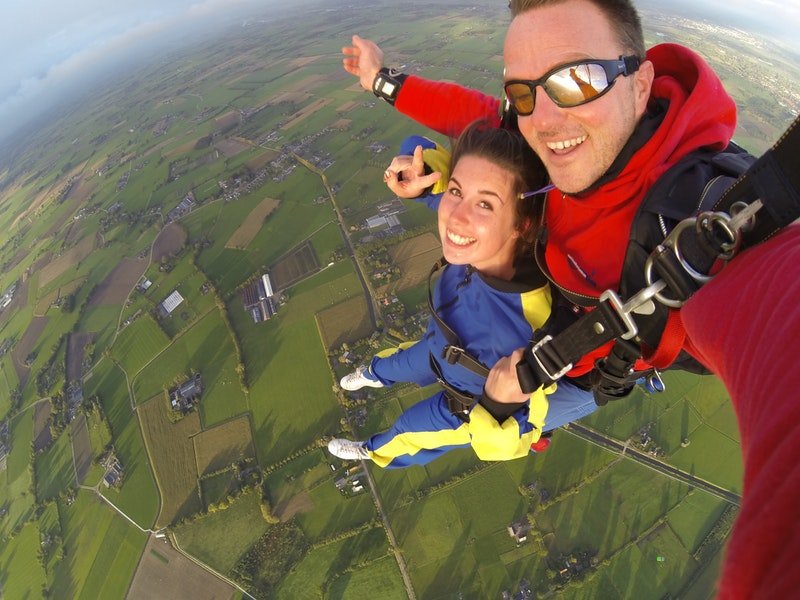
Another question may be, ‘how long does a skydiving day take?’ That also depends on many different factors. Not to mention how many skydives you have planned and how many other skydivers you will be jumping with.
While we can’t give you a reliable estimate on the time you need to set aside (you will have to confirm this with the school or company you are jumping with), we can give you a quick idea of what to expect.
If you are a total newbie and it is your first solo jump, you’ll need to spend a considerable amount of time in the classroom first. Most schools will put you through a classroom induction of around 4-6 hours before your first solo jump.
Your jump day is likely to start with pleasant introductions and a no-rush induction into the equipment and plan for the day. Things will move at a leisurely place with lots of time spent getting you familiar with everything and recapping the safety procedures. You’re also likely to be skydiving with similarly inexperienced people, and the occasional will be very sociable.
As a newbie, your equipment will have already been packed by a licensed professional. One of your instructors will help get you suited up, and often a second professional will double-check that you are geared up and ready to go.
You’ll then board the plane. The plane ride itself can take around 20 minutes to reach the correct altitude and drop zone. Before the doors open and you take your jump, the instructor will do one last check of your gear, and you’re ready to go!
One thing to note is how much skydiving relies on the elements. Skydiving is totally dependent on clear blue skies, and weather delays are extremely common.

